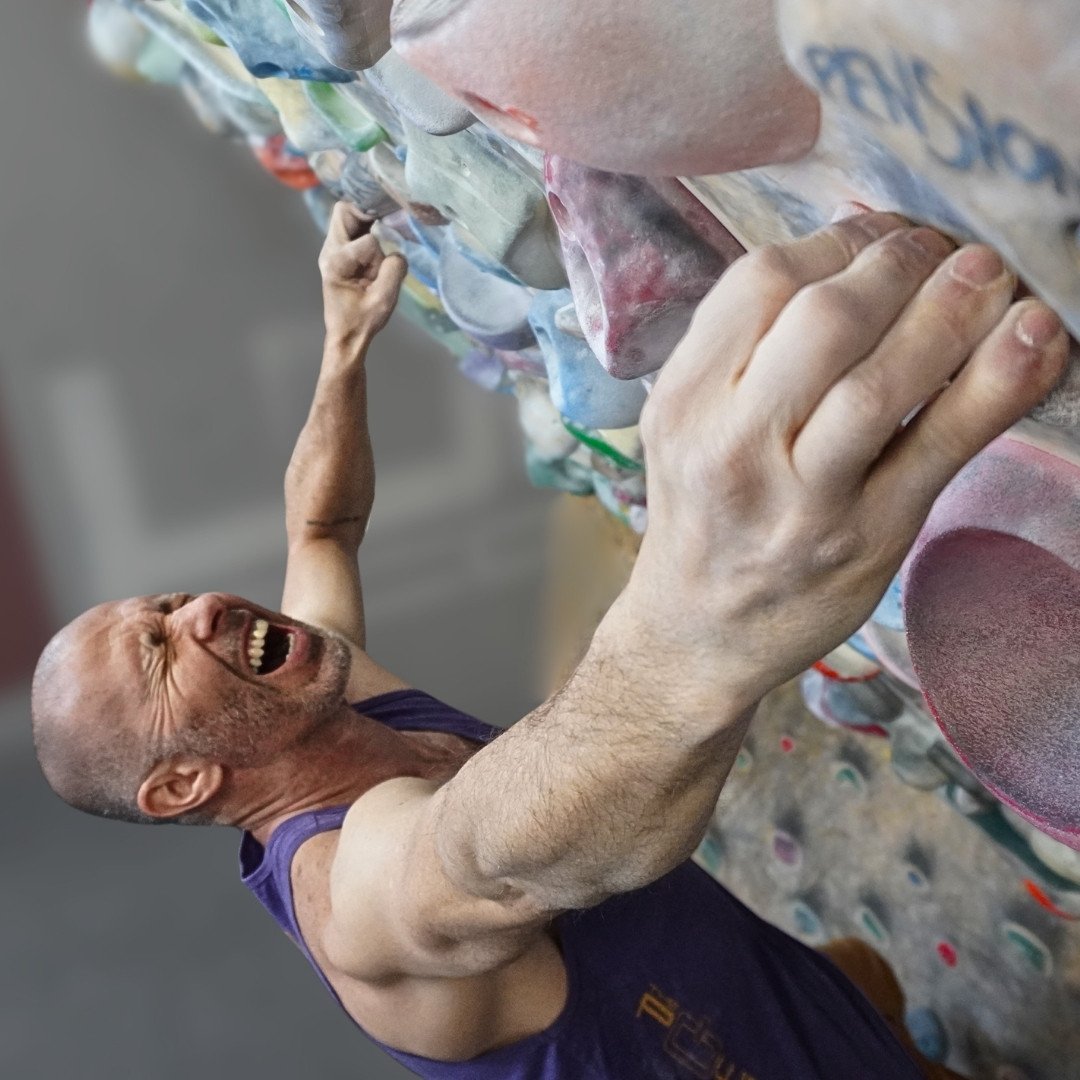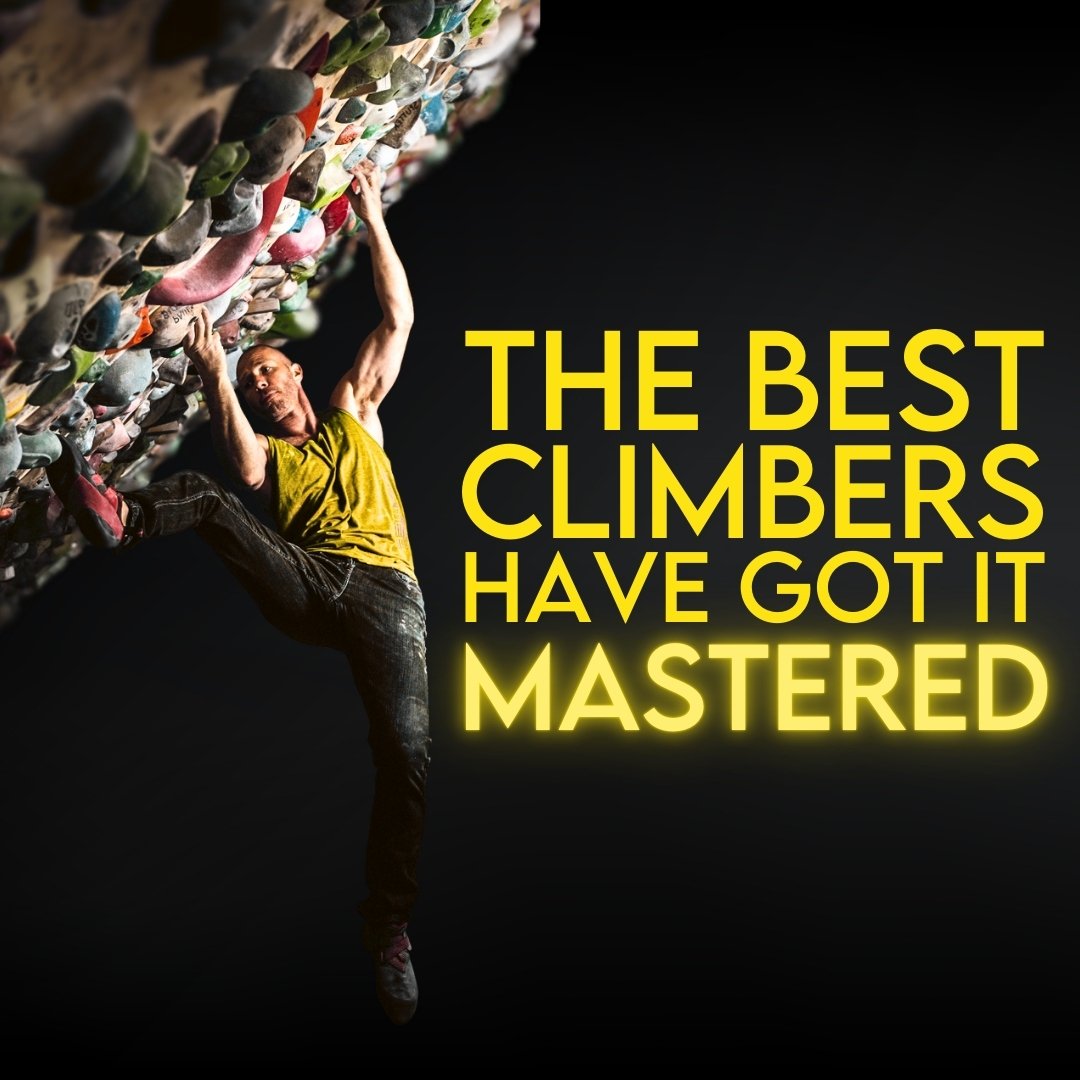Why Strength Training Isn’t Making You Climb Harder
Advanced climbing is a game of compensation. It’s long been said that the best athletes are the best at compensating around their weaknesses and leveraging their strengths. Climbing might be one of the best examples of this. We see people with a wide range of body types, strength levels, and skill sets climbing at a high level.
It’s for this reason that when an experienced climber begins to strength train for the first time they will often be underwhelmed with their initial results. Sure, they do feel a little stronger, and there are glimpses of something happening when they do a move they couldn’t before, but the juice doesn’t seem worth the squeeze. Why is that?

What’s happening is that they’ve logged thousands of hours of climbing without that added strength. They spent years learning to move in ways that compensated for their weaknesses. All of that experience and movement proficiency is still in the driver’s seat after they strength train. They might be strong enough to do bigger moves, move in greater control, and access new techniques they couldn’t before, but until they put in the time to explore and practice these things they will feel like strength training wasn’t worth the effort.
Unfortunately, losing hope and abandoning strength training isn’t the only possible outcome in this situation. The opposite of this can happen, too. People will train to get stronger, only see minor improvements in their climbing performance, and then decide they need to double down on getting stronger because of how little transfer they saw. In reality, they need to take the time to combine their strength and skills to see the full value of their training. Climbers will dedicate years to getting “strong enough” when what they really need is to learn how to apply the strength they already have.
Strength training makes us more resilient against injury, it enables us to climb more each day, and it allows us to use new techniques and ranges of motion that our weaker selves couldn’t. As we gain access to these new techniques and positions we need to put in time and intentional practice to explore, understand, and make them automatic parts of our movement repertoire. Strength and skill are both important on their own, but it’s not until we combine the two that we can start to reach our potential.
Get stronger, learn how to apply it, send harder, repeat. It’s not an overnight solution, but that’s what makes climbing a lifelong pursuit of mastery.

Switching back and forth between sport climbing and bouldering can be difficult…
Alex Megos once said that conditions don’t matter, but we all know that’s not true… or is it?
There’s one often overlooked thing that has the power to positively – or negatively – affect every single day of climbing for the rest of your life.
There is a point at which continuing a tactical approach can slow your climbing gains.
Toe-hooking can seem more like sorcery than other techniques, but you’re probably just going about it the wrong way.
Implementing this one simple thing can result in big performance gains in your climbing, no matter what level you’re at.
Despite being constantly present and often the reason we fail, Rhythm is the most underrated of the Atomic Elements of Climbing Movement.
Long-time friends Nate and Ravioli Biceps discuss lessons they’ve pulled from video gaming that can help inform our climbing.
There’s A LOT of great information out there on how to climb harder. But it’s tough to sort through…
Short climbers are good at getting scrunchy, and tall climbers are good at climbing extended, right? Wrong.
One of the most common places things start to fall apart is at the very beginning of the move.
We know spending time on a finishing link is smart tactics for hard climbs. So why not apply the same concept to individual moves?
Learning when and how to compensate for a weakness is a skill. And skills need to be practiced.
Lowball boulders, while not as proud, can still teach us new movement, new ways to utilize tension, and force us into finding new techniques.
I never thought I’d be recommending this, but some of y’all should be putting less effort into becoming technically better climbers.
Training principles are important, but when they creep into performance, your climbing will suffer. Nearly every time.
We have become collectors of dots. But there’s one major thing that happens when we connect dots that is entirely lost in mass dot collection: critical thinking.
Do you really have terrible willpower? Or are you surrounded by distractions and obstacles?
You have a climbing trip coming up. The rock is different. The style is different. Your pre-trip time is short and the number of days you’ll be climbing, even shorter…
Giving artificially low grades to climbs increases their perceived value for our training and development. The more something is mis-graded the more we naturally want to prioritize it.
Discussion around grades can be so polarizing that many of us avoid the topic.
Climbing starts off as this self-feeding cycle that has you wishing you could climb seven days a week. What happens when this cycle stops bringing improvement though?






























A better way to view grades and progression?